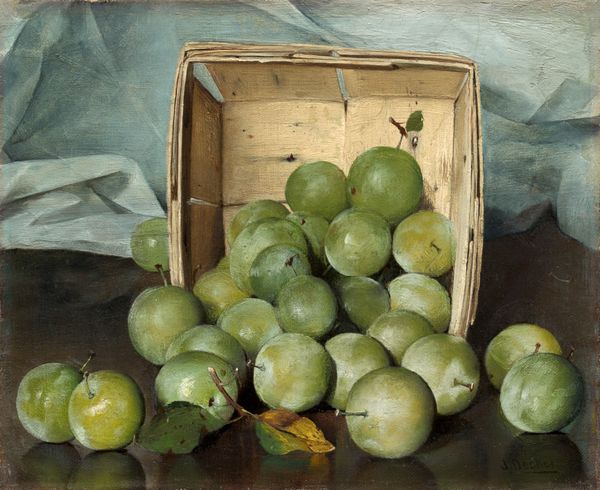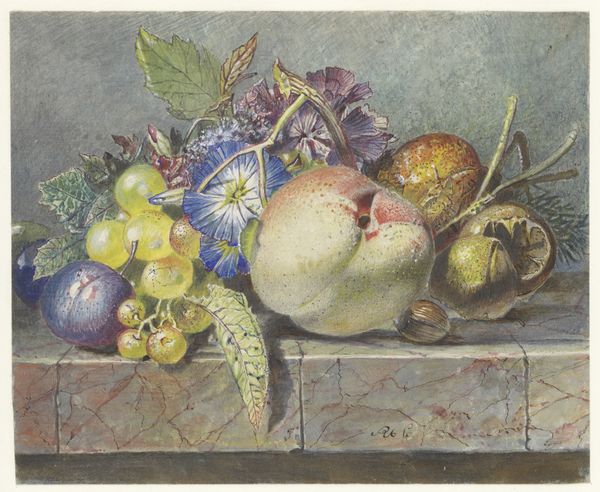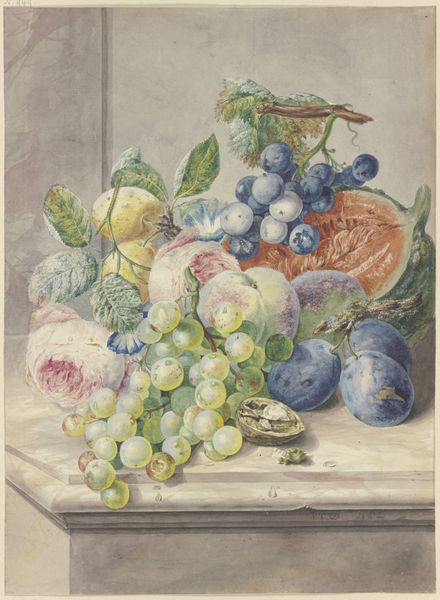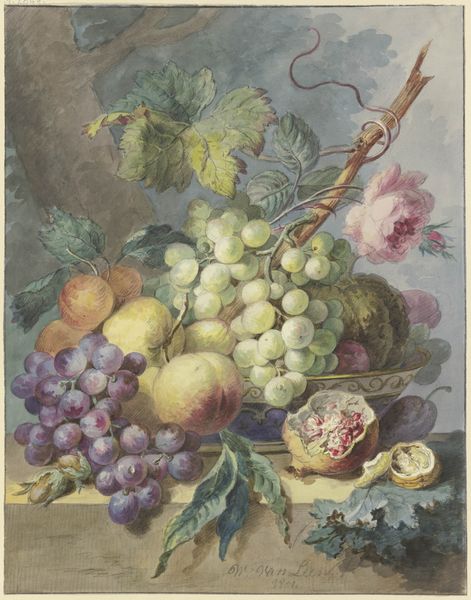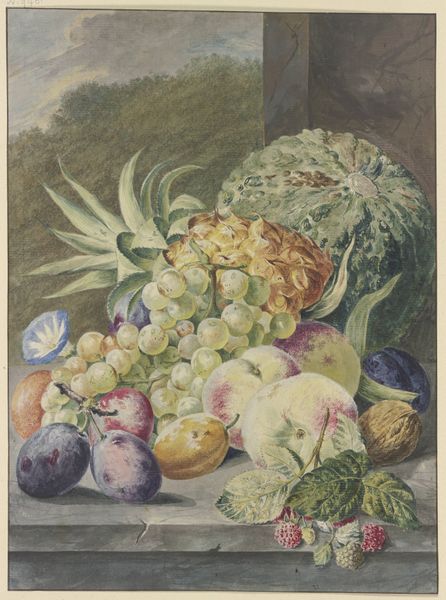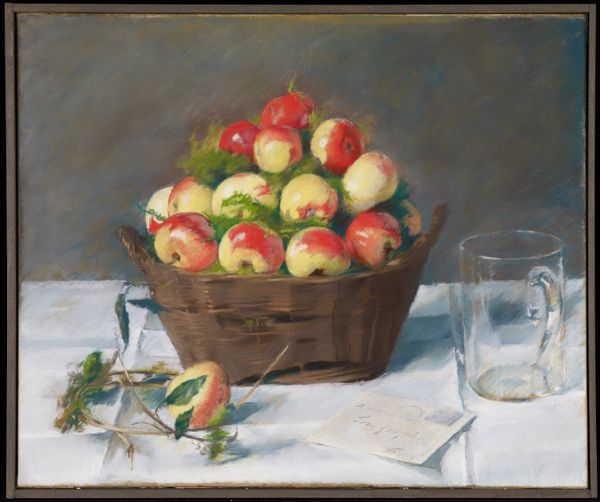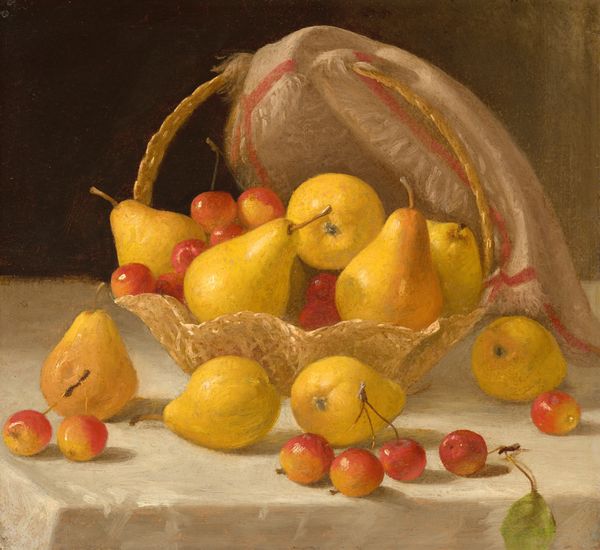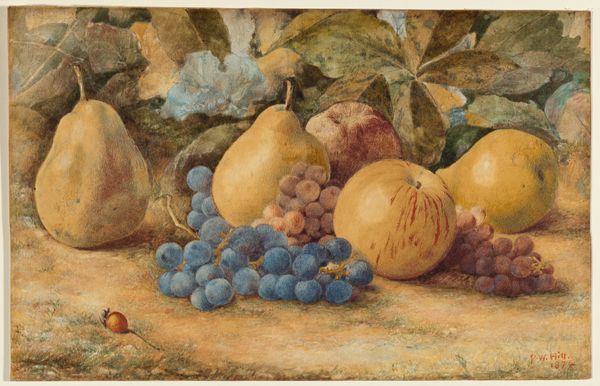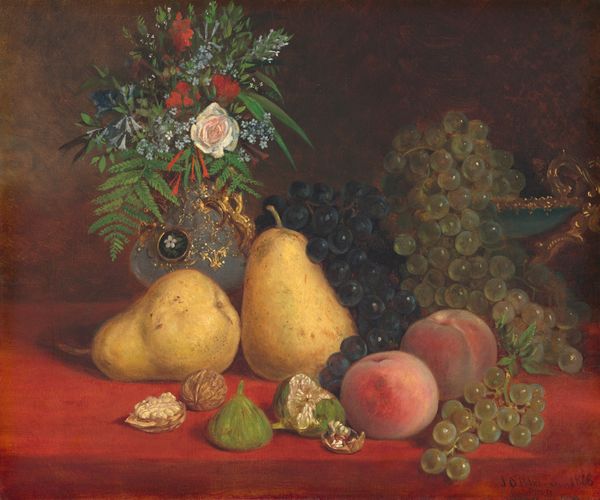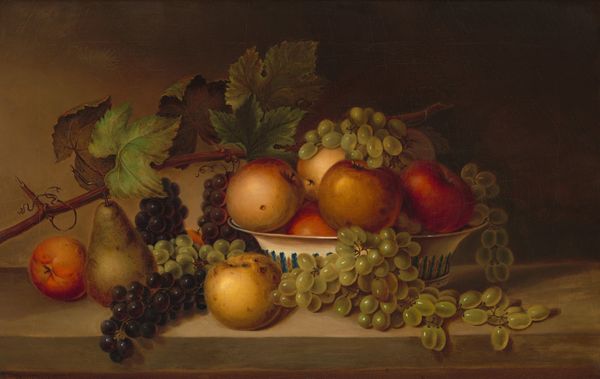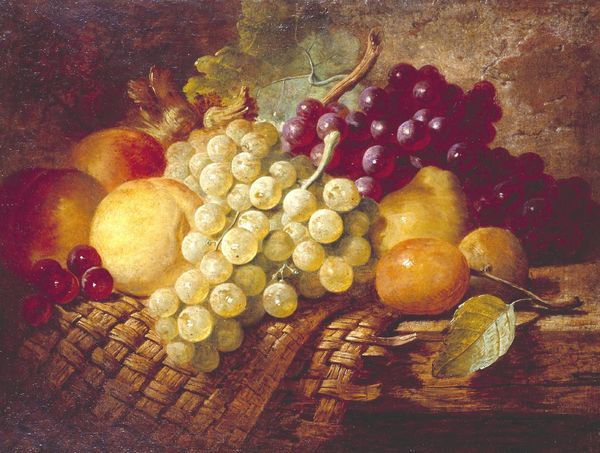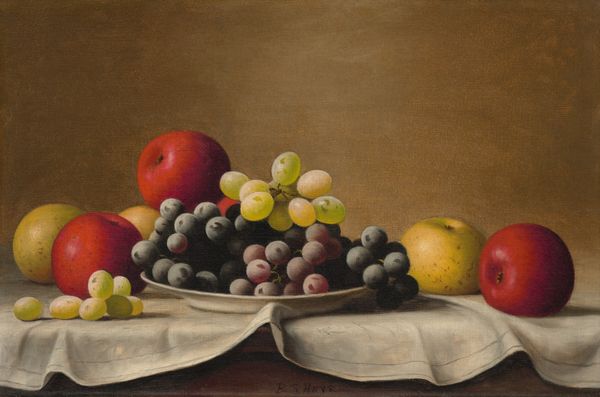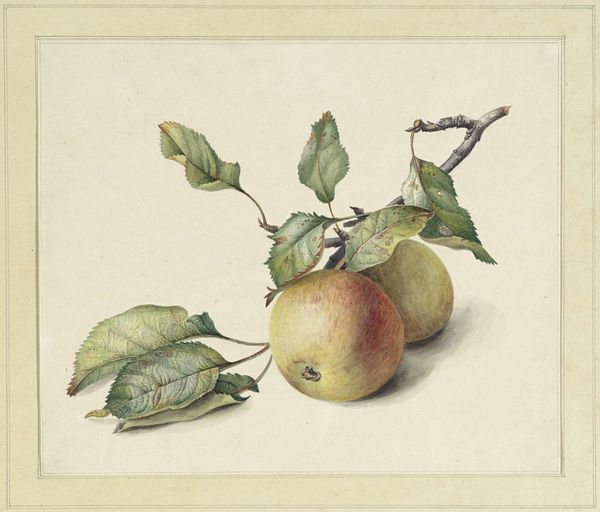
drawing, tempera, watercolor
#
drawing
#
baroque
#
animal
#
tempera
#
impressionism
#
oil painting
#
watercolor
#
15_18th-century
#
watercolour illustration
#
watercolor
Copyright: Public Domain
Curator: This is "Still Life with Bunch of Grapes, Walnut and Peaches," currently residing here at the Städel Museum. The artwork is attributed to Wybrand Hendriks, and although it has no confirmed date, it certainly aligns with the Dutch still-life tradition. The medium seems to be a skillful blend of watercolor and tempera. Editor: Ah, yes. Immediately, there's something subtly melancholic about this scene, despite the abundance. The muted palette, the almost overly ripe quality of the fruit... it feels like a moment captured right before decay sets in. Curator: Still lifes in this era often functioned as more than simple representations. Think about the Vanitas tradition. The grapes symbolize blood, the peaches potentially immortality, and the walnut alludes to Christ. Hendriks, as many of his contemporaries did, layers meaning beneath an outwardly appealing surface. Editor: It's that almost hyper-realism juxtaposed with this undercurrent of ephemerality. Look at that fly or some other bug—it seems a deliberate inclusion, a reminder of the less romantic realities of nature and life. There’s something profoundly human in noticing those details. Curator: And that human touch is shaped by cultural and societal forces. Dutch society in the 18th century was deeply engaged with both burgeoning scientific observation and a strong moral, religious framework. You can see echoes of both influences here. Art wasn’t just about beauty, it was about reflecting the complexities and often the contradictions within society. Editor: Right. Because without the societal context, without knowing about the economic boom and the Calvinist leanings and so forth... It's just pretty fruit on a shelf, right? But actually seeing, observing, and depicting, became acts of civic virtue, like a meditation on being alive at that moment in time. Curator: Precisely! The market demanded artworks reflecting its values, shaping what artists created. Hendriks’ work, whether consciously or unconsciously, responds to and reinforces those expectations. Editor: The fly gets a standing ovation for truth! It does leave you wondering. A final meditation for me would be: what tiny detail of today, if captured just so, might encapsulate our time here on Earth? Curator: A profound question! For me, considering it historically, it reveals much about our values. Thank you for your time.
Comments
No comments
Be the first to comment and join the conversation on the ultimate creative platform.

